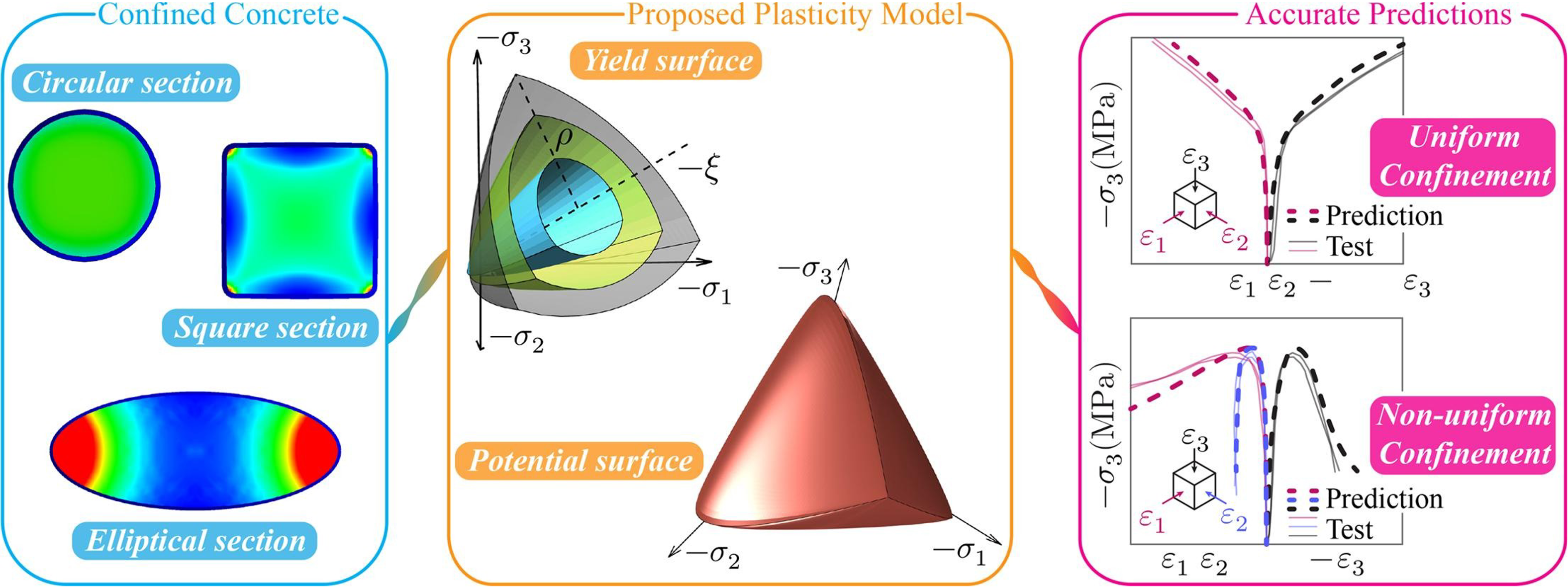A plasticity constitutive model for concrete under multiaxial compression
Highlight
•A plasticity constitutive model with a novel potential surface is presented.
•The model depicts concrete behavior under general multiaxial compression.
•Special attention is paid to concrete under non-uniform passive confinement.
•Challenges in the numerical implementation of the model are addressed.
•The model is shown to be accurate through comparisons with test data.
Structural members with confined concrete are becoming increasingly popular in civil engineering applications because of their superior strength and ductility. In these structural members, the concrete is subjected to dilationinduced (passive) lateral compressive stresses from the confining device (e.g., a steel tube). Existing research has led to theoretical models that predict closely the stress–strain behavior of concrete under uniform confinement (e.g., concrete in circular steel tubes under concentric axial compression), but theoretical models with a similar capability have not been achieved for the more common situation of concrete under non-uniform confinement (e. g., concrete in rectangular steel tubes). This paper presents a three-dimensional (3D) plasticity constitutive model that is accurate in predicting the stress–strain behavior of concrete in various scenarios of confinement. In the proposed model, a well-established open strength surface with associated open yield surfaces is combined with a hardening/softening rule compatible with both plastic volumetric compaction and dilation. In addition, a novel potential surface with a triangle-like deviatoric trace is proposed and calibrated with available experimental data of non-uniformly confined concrete. The implementation of the constitutive model in finite element analysis with an enhanced stress-return algorithm suitable for the novel potential surface is explained. While the focus of the present work is on monotonic compression-dominated loading, the model can be combined with fracture and damage theories to depict the behavior of concrete under tension-dominated and cyclic loading conditions. The performance of the proposed model is evaluated by comparing its predictions with a wide range of experimental data covering uniform active, uniform passive, and non-uniform passive confinement conditions, which demonstrates the capability and high accuracy of the proposed model.





